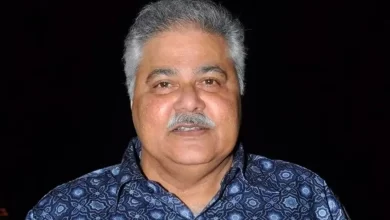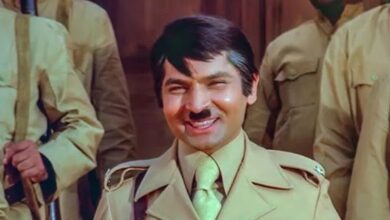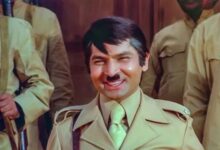
By Sonu Tyagi, Editor, Approach Bollywood
The allure of Bollywood has long been its ability to weave dreams, evoke emotions, and transport audiences to a world of larger-than-life stories. From the poetic romances of the ’90s to the gritty realism of the 2000s, Hindi cinema has thrived on its ability to connect with the hearts of millions. But in 2025, as we witness the meteoric rise of films like Saiyaara, a troubling question looms: Are the days of genuine Bollywood hits over? Have we entered an era where inflated box office figures, fabricated narratives, and orchestrated emotional stunts have replaced authentic storytelling? The answer, sadly, seems to be a resounding yes.
The Saiyaara Phenomenon: A Case Study in Deception
Take Saiyaara, the Mohit Suri-directed romantic drama starring newcomers Ahaan Panday and Aneet Padda, as a case in point. On paper, the film is a juggernaut. Reports claim it grossed over ₹500 crore worldwide in just 18 days, making it the second-highest-grossing Hindi film of 2025, trailing only Chhaava’s ₹807.91 crore. It’s been hailed as a “blockbuster debut,” with headlines screaming about its record-breaking opening weekend of ₹84.50 crore and a global collection that outdid Hrithik Roshan’s War and Shah Rukh Khan’s Dunki. Social media buzzed with viral videos of fans supposedly weeping uncontrollably in cinema halls, some even fainting or attending screenings with IV drips, painting Saiyaara as an emotional tour de force.
But scratch the surface, and the reality is starkly different. As someone who sat through Saiyaara expecting the soul-stirring magic of Suri’s earlier works like Aashiqui 2, I found myself disconnected, bored, and frankly, baffled. The film’s narrative, centered on a musician and a writer navigating love and heartbreak, felt like a tired rehash of tropes, lacking the depth or authenticity to justify its hype. The screenplay dragged, the emotional beats felt forced, and the much-lauded chemistry between Panday and Padda was lukewarm at best. Reviews from audiences echoed this sentiment, with some calling the ending “sloppy” and the runtime “lengthy.” One critic aptly noted that Saiyaara “falls short of its promise,” leaving a “bittersweet aftertaste” rather than a lasting impact.
So how does a film that fails to resonate become a “blockbuster”? The answer lies in Bollywood’s new playbook: manipulation over merit.
The Fake Narrative Machine
Saiyaara’s promotion leaned heavily on fabricated emotional narratives. Social media was flooded with videos of “fans” sobbing in theaters, creating an illusion of universal adoration. Yash Raj Films, the film’s producer, fueled this frenzy, with CEO Akshaye Widhani claiming these reactions were “genuine.” But skepticism abounds. Reports surfaced questioning whether these emotional outbursts were staged, with accusations that the filmmakers planted fans to amplify the film’s appeal. This isn’t a new tactic. Bollywood has a history of using orchestrated buzz to mask mediocrity, as seen with films like Jigra, where producers allegedly bought theater tickets to create the impression of packed houses, only for the film to flop spectacularly.
The Saiyaara campaign also capitalized on Bollywood’s obsession with numbers. Daily box office updates, often inflated, were shared relentlessly on social media, drowning out discussions about the film’s quality. One Trade analyst noted that filmmakers use these figures as a “promotional tool,” shifting focus from storytelling to statistics. For Saiyaara, the numbers were staggering—₹308 crore net in India, ₹507 crore worldwide—yet whispers of inflated collections persist. Industry insiders have long exposed the murky world of “fake” box office figures, where studios manipulate data to project success, a practice that has become alarmingly common.
The Erosion of Authenticity
This obsession with fabricated success signals a deeper malaise in Bollywood: the erosion of authenticity. Once, a film’s success was measured by its ability to linger in the audience’s heart—think Dilwale Dulhania Le Jayenge or Lagaan. Today, it’s about creating a mirage of triumph through PR stunts and paid reviews. Saiyaara’s glowing reviews, some suspiciously effusive, mirror a broader trend where producers pay for praise, with deals costing up to ₹50 million for positive coverage. These tactics don’t just mislead audiences; they undermine the integrity of cinema itself.
Even emotions, Bollywood’s lifeblood, are now being exploited. Saiyaara’s marketing leaned heavily on its “emotional core,” with claims that it left audiences in tears. But when the film fails to deliver that catharsis, it feels like a betrayal. As director Mohit Suri himself admitted, he aimed for an “intimate” project after the failure of Ek Villain Returns. Yet, the reliance on overhyped narratives suggests a lack of confidence in the film’s ability to stand on its own. When emotions are staged for clout, they lose their sanctity, turning cinema into a hollow spectacle.
The Industry’s Complicity
Bollywood’s complicity in this charade is undeniable. Celebrities like Akshay Kumar, Anil Kapoor, and Alia Bhatt publicly praised Saiyaara, but their endorsements felt more like industry courtesy than genuine admiration. The film’s soundtrack, touted as a “triumph,” saw its title track climb Spotify charts, yet even this success was amplified by coordinated social media campaigns, with Ananya Panday urging fans to push it to “number 1.” The industry’s reliance on such tactics reveals a desperate need to manufacture hits in an era where audiences are increasingly discerning.
The rise of social media has only exacerbated this problem. Platforms like X and Instagram allow studios to bombard audiences with curated narratives, from daily box office updates to viral fan reactions. Actor Manoj Bajpayee aptly noted that this focus on numbers has shifted discourse away from storytelling, with “every second post” about earnings. For Saiyaara, this strategy worked wonders, propelling it past films like Housefull 5 and Sikandar. But at what cost? When success is built on deception, it erodes trust between filmmakers and audiences.
A Call for Change
The Saiyaara saga is a wake-up call for Bollywood. If the industry is to reclaim its glory, it must prioritize authenticity over artifice. Filmmakers should trust in the power of genuine storytelling, not fabricated buzz. Audiences deserve films that resonate, not ones propped up by inflated figures and staged tears. The success of a film should be measured by its emotional impact, not its ability to game the system.
As I left the theater after watching Saiyaara, I felt no connection to Krish or Vaani’s journey. The promised tears never came, replaced instead by disappointment. Bollywood must return to its roots—stories that move, characters that linger, and emotions that ring true. Until then, the era of genuine hits will remain a distant memory, lost in a haze of fake narratives and exploited emotions.
Download Approach Bollywood App Now. Approach Bollywood – Apps on Google Play










